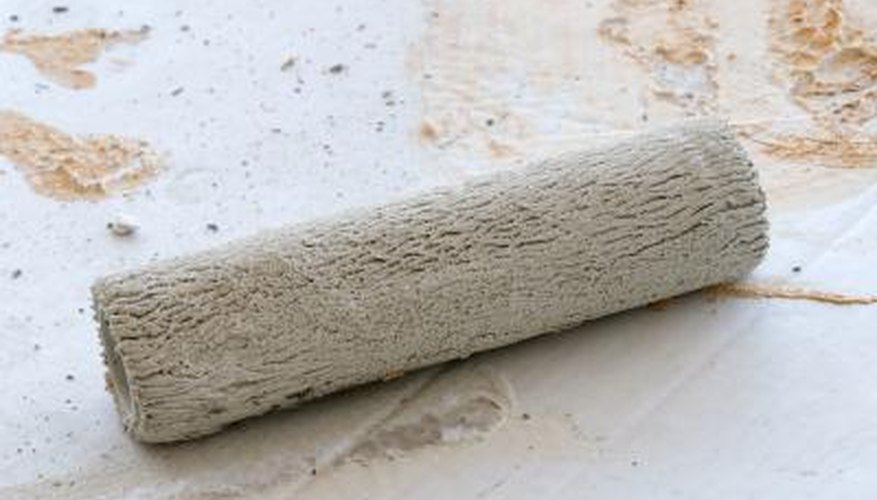Painting the ceiling can be a sloppy job unless you take some measures against paint splatter. Splattering is less an issue with a brush, but all rollers will splatter somewhat. Get the right roller for the job, work with care and cover areas you need to protect with plastic or tape.
Roller Nap
The nap on a roller is its thickness -- how much material is adhered to the roller to soak up paint. The thicker the nap, the more spray you'll experience. Get the thinnest nap you can use for your job. Usually, thick naps, like 3/4 inch, are for walls with texture. Normal wallboard takes a 3/8-inch nap. Use an even thinner one if you are really trying to cut down spatter.
- The nap on a roller is its thickness -- how much material is adhered to the roller to soak up paint.
Paint Load
Don't overload the roller. You may not get full coverage for your first coat, but the splatter will be less. Roll off all that excess paint on the roller pan before you apply it to the ceiling. If you don't, you may have huge drips coming down on your face. A larger roller tray helps too. You have more room to manoeuvre the roller, so you can take off more paint. For brushed areas, sweep the bristles across the rim of whatever container you are using to curtail drips.
- Don't overload the roller.
- You may not get full coverage for your first coat, but the splatter will be less.
Roller Shield
A roller shield will block splatter as it comes off the roller. It's a semicircular shield that is affixed to the roller handle. It cups the roller and collects splatter. It will block your direct view of the roller while you are using it on the ceiling, but this device will keep most splatter from coming into the room and landing on other surfaces.
- A roller shield will block splatter as it comes off the roller.
- It will block your direct view of the roller while you are using it on the ceiling, but this device will keep most splatter from coming into the room and landing on other surfaces.
